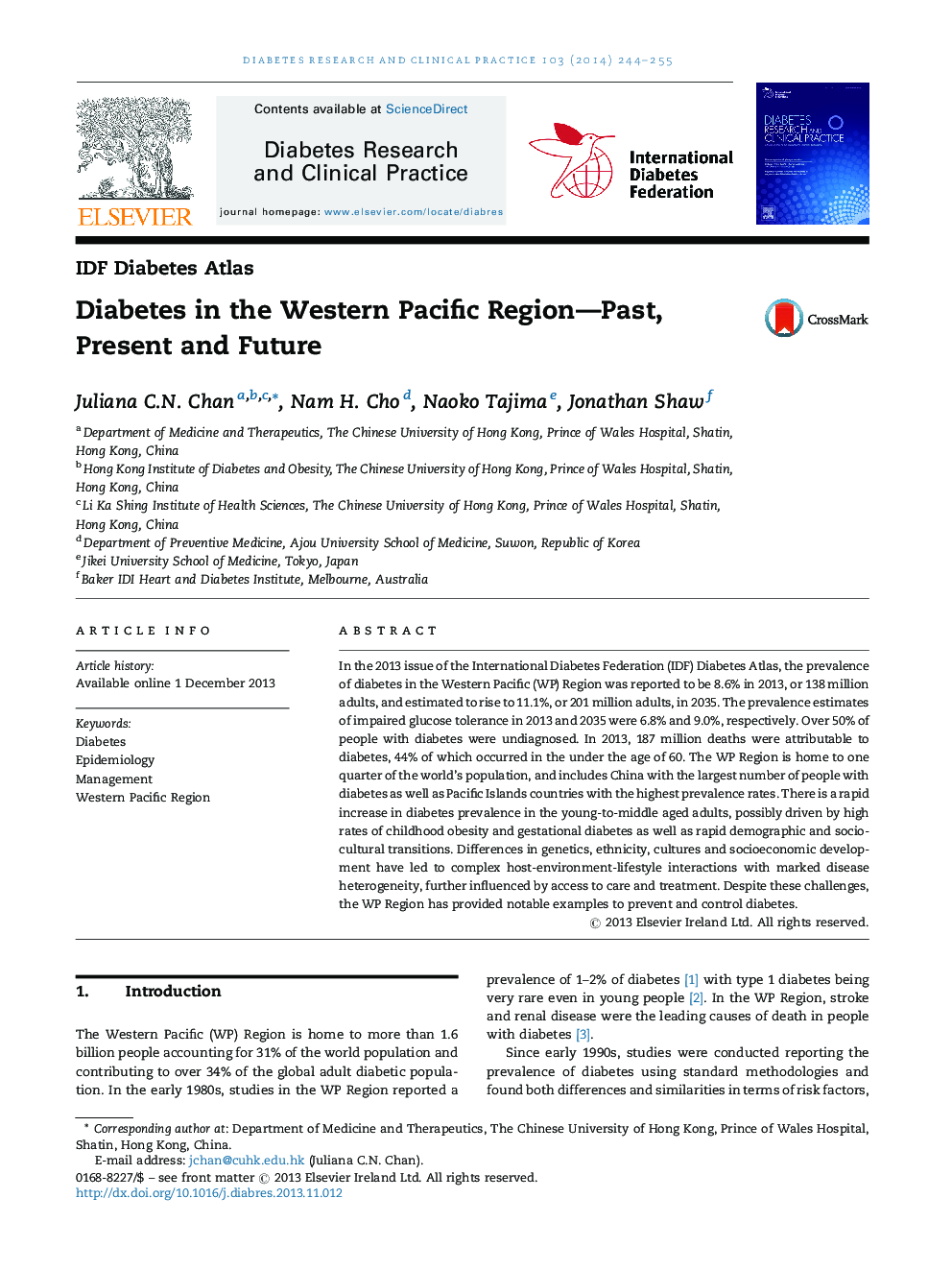| Article ID | Journal | Published Year | Pages | File Type |
|---|---|---|---|---|
| 2796461 | Diabetes Research and Clinical Practice | 2014 | 12 Pages |
In the 2013 issue of the International Diabetes Federation (IDF) Diabetes Atlas, the prevalence of diabetes in the Western Pacific (WP) Region was reported to be 8.6% in 2013, or 138 million adults, and estimated to rise to 11.1%, or 201 million adults, in 2035. The prevalence estimates of impaired glucose tolerance in 2013 and 2035 were 6.8% and 9.0%, respectively. Over 50% of people with diabetes were undiagnosed. In 2013, 187 million deaths were attributable to diabetes, 44% of which occurred in the under the age of 60. The WP Region is home to one quarter of the world's population, and includes China with the largest number of people with diabetes as well as Pacific Islands countries with the highest prevalence rates. There is a rapid increase in diabetes prevalence in the young-to-middle aged adults, possibly driven by high rates of childhood obesity and gestational diabetes as well as rapid demographic and sociocultural transitions. Differences in genetics, ethnicity, cultures and socioeconomic development have led to complex host-environment-lifestyle interactions with marked disease heterogeneity, further influenced by access to care and treatment. Despite these challenges, the WP Region has provided notable examples to prevent and control diabetes.
